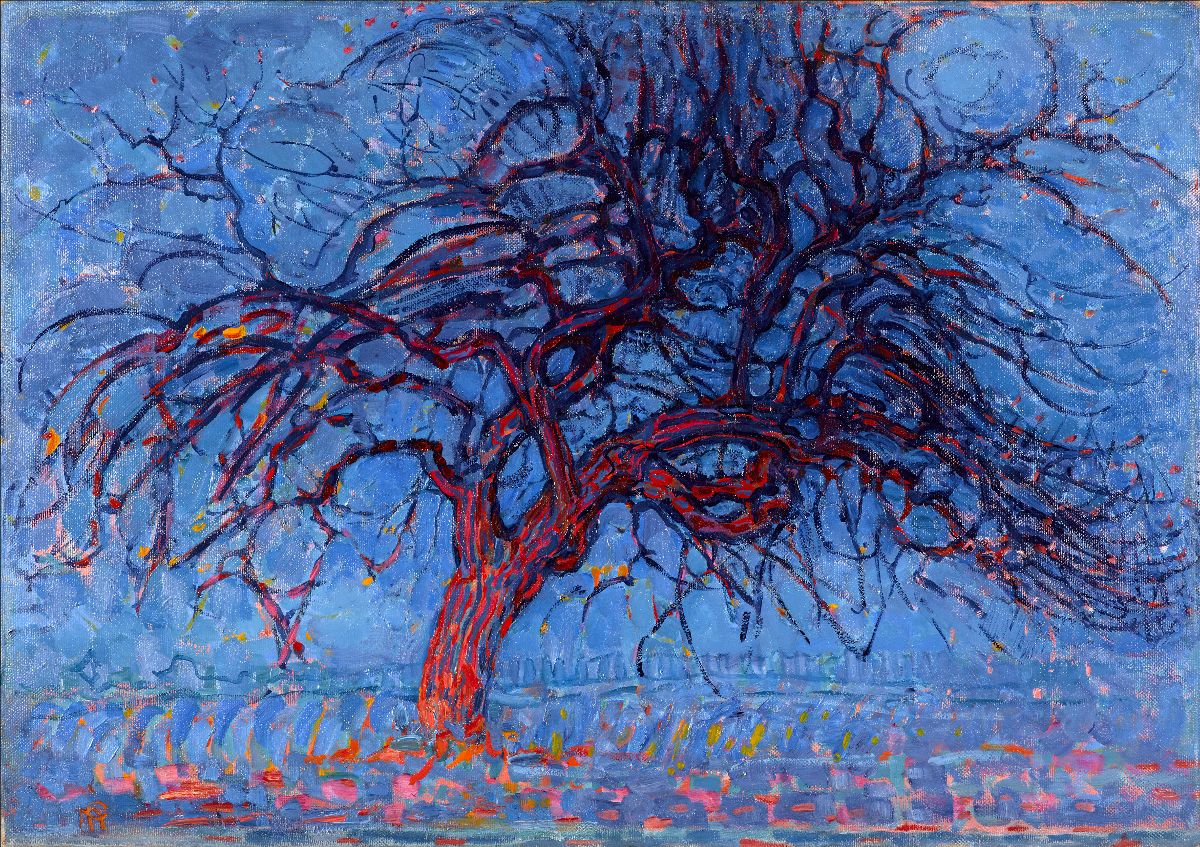June 5 – October, 9, 2022
Fondation Beyeler
Mondrian Evolution
Baselstrasse 101, 4125 Basel, Switzerland
Marking the 150th anniversary of the artist’s birth, the Fondation Beyeler devotes a comprehensive exhibition to the Dutch painter Piet Mondrian (1872–1944), bringing together works from its own collection and major international loans. As one of the most significant and versatile artists of the avant-garde, Mondrian had a decisive influence on the development of painting from figuration to abstraction. With 85 works on display, Mondrian Evolution shows Piet Mondrian’s striking development from 19th-century landscape painter to one of modern art’s leading protagonists, highlighting the diversity of his oeuvre. The exhibition is a rare opportunity to take a fresh look at Mondrian, who not only had a significant influence on 20th century art but also on design, architecture, fashion and pop culture.
While the Fondation Beyeler’s collection mainly features works from the later phases of Mondrian’s career, the exhibition will look primarily at the artist’s early work. The Dutch painter Piet Mondrian was initially influenced by late 19th-century Dutch landscape painting, but Symbolism and Cubism also played a major role in his artistic development. It was only in the early 1920s that he began concentrating on a wholly non-representational pictorial vocabulary consisting solely of rectilinear arrangements of black lines on a white background and the three primary colors blue, red and yellow. Mondrian’s abstract paintings are the outcome of a long process of wrestling between intuition and precision, as well as unceasing, intense self-questioning. He viewed abstraction as a process of closing in on absolute truth and beauty, which he strove for as an artist. Mondrian’s stylistic versatility derived from his ongoing quest for the unity and the very essence of the image. He used the term “evolution” himself – not, however, in the sense of Charles Darwin. For Mondrian, evolution meant the accretion of experiences, on which a new phase of artistic development could build, in turn leading to further insights.
The exhibition is organized largely chronologically, yet it thrives on the juxtaposing of early and late works, which brings to light the transformative forces at play in Mondrian’s work. Across nine rooms, Mondrian Evolution deals with recurring motifs such as windmills, dunes, the sea, farmhouses reflected in water and plants in various states of abstraction. Mill in Sunlight, painted in 1908 and still radical by today’s standards, caused an uproar among contemporary critics on account of its explosion of colors and sketchy painting technique. The exhibition also features the atmospheric work The Red Cloud, 1907, which captures the magical and fleeting moment in which the low sun turns a cloud a luminous red whereas the landscape and the sky still appear a radiant blue. The painting belongs to a group of works that Mondrian painted at dusk, when colors and color combinations undergo intense change. In the self-portraits he drew in 1908, Mondrian also represented himself at twilight, his pupils wide open and receptive even to the smallest shift in shade brought about by the light. Mondrian’s large-scale painting Woods near Oele, 1908, on loan from the Kunstmuseum Den Haag, shows a view toward the sun above the horizon. The staggered tree stems, appearing red or purple against the light, create the illusion of spatiality.
Following the color explosions of the years 1907 to 1911, Mondrian, inspired by his encounter with Cubism in Paris, reverted to less radiant colors. Greys and ochres now set the tone of the paintings and the line as such became increasingly important. Mondrian continued his investigation of themes such as abstraction. Composition No. IX, 1913, on loan from the Museum of Modern Art in New York, is an arrangement of interlocking shapes largely defined by right angles. New York City 1 is the most recent work in the exhibition and belongs to a small group of paintings created around 1941.

Born in 1872 in Amersfoort in the Netherlands, Mondrian came into contact with art from a young age: his father was a drawing teacher, his uncle a successful amateur painter influenced by the Hague School of landscape painting, a specifically Dutch form of Impressionism. After a Calvinist upbringing and training as a drawing instructor, between 1892 and 1895 Mondrian studied at the Rijksakademie van Beeldende Kunsten in Amsterdam. He kept working as a drawing teacher, painted portraits on commission and produced scientific drawings for Leiden University. All the while, he also pursued his artistic ambitions and increasingly developed his own painting style.
The Dutch painter Piet Mondrian’s art is closely connected to his interest in philosophy and esotericism. Starting in 1908, he immersed himself in Theosophy – he joined the Dutch branch of the Theosophical Society in 1909. Mondrian’s encounter with Cubism led to a first stay in Paris in late 1911, lasting until 1914 when the outbreak of World War I prevented him from returning there. In 1919, he moved to Paris for good.
After World War I, many artists strove for a radical cultural new beginning. In the Netherlands, a group of like-minded avant-garde artists came together and in 1917 began publishing the journal De Stijl. Mondrian formulated the group’s ambition to destroy traditions in order to reconfigure all aspects of life on the basis of the essential elements of art as he saw them.
He named his new painterly mode of expression “Neoplasticism.” Above all, Mondrian conceived “Neoplasticism” as focussing on painting’s essential means of expression: on the one hand, black and white, located at opposite ends of the colour scale.Mondrian was concerned with the essential picture, the creation of perfect yet suspenseful balance, in which all elements appear to take their rightful place.
Mondrian spent the last 25 years of his life in three of the modern age’s culturally most important metropolises: Paris, London and New York. From late 1911 to 1938, with an interruption due to World War I, he lived in Paris. After a few intermediate years in London, in 1940 he moved to New York where he died in 1944 aged 71. As a member of the Theosophical Society, Mondrian attached great importance to internationality. From the 1920s, Mondrian became a celebrity as an avant-garde artist and a co-founder of abstract painting. His studios became legendary and highly inspiring places, especially for younger artists such as Alexander Calder, Willem de Kooning and Lee Krasner.
Mondrian Evolution is organized by the Fondation Beyeler, Riehen/Basel and the Kunstsammlung Nordrhein-Westfalen, Düsseldorf, in cooperation with the Kunstmuseum Den Haag. The exhibition is curated by Ulf Küster, Senior Curator, Fondation Beyeler, Kathrin Beßen and Susanne Meyer-Büser, Kunstsammlung Nordrhein-Westfalen.

